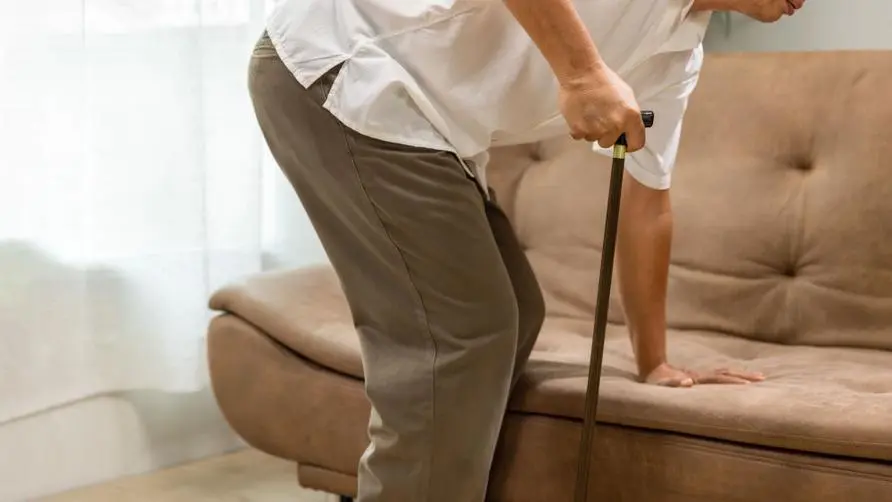Sudden drop in temperature can trigger asthma and worsen COPD symptoms! The functions and types of inhalant drugs are very different: incorrect storage may lead to "misjudgment of dosage"

Asthma and COPD are prone to attack due to sudden temperature drop. Common inhalant drugs are very different.
The northeast monsoon has recently intensified, and the temperature has become obviously cold and humid, which is more likely to increase the risk of chronic respiratory diseases such as asthma and chronic obstructive pulmonary disease (COPD). According to Taiwan Health Promotion Administration, asthma refers to the chronic inflammation of the bronchial tubes after being stimulated by allergens or irritants, while COPD is a respiratory obstruction disease that cannot be recovered due to long-term inflammation of the chronic respiratory tract. The main cause is The respiratory tract is long-term irritated by dirty air, which can cause bronchial obstruction and difficulty breathing in severe cases.
The Taiwan Ministry of Health and Welfare, Food and Drug Administration pointed out that in order to relieve the symptoms and discomfort of chronic respiratory diseases, inhaled dosage drugs will be prescribed clinically, which can reduce the anti-inflammatory response of the respiratory tract through respiratory tract administration, dilate bronchi and prevent bronchoconstriction. Improve or relieve respiratory discomfort. Currently, inhalant drugs are divided into three types based on their mechanism of action:
Inhaled corticosteroids (ICS): Common ingredients include Budesonide and Fluticasone propionate. The main function of this type of corticosteroids is in the inhalation tract, which can improve or reduce the inflammatory response and prevent bronchoconstriction.
B2-adrenergic receptor agonists: divided into long-acting LABA (Long-acting beta agonist) and short-acting SABA (short-acting beta agonist). Common ingredients include Indacaterol, Formoterol, Fenoterol and Salbutamol acts on beta-sympathetic nerve receptors in the respiratory tract, relaxing the smooth muscles on the bronchus, dilating the bronchi, and preventing bronchoconstriction.
Anti-cholinergic agents: divided into long-acting LAMA (long-acting muscarinic antagonist) and short-acting SAMA (short-acting muscarinic antagonist). Common ingredients include Umeclidinium, Glycopyrronium, Tiotropium and lpratropium inhibits muscarinic receptors in the respiratory tract to relax the smooth muscles in the bronchus, dilate the bronchi, and prevent bronchoconstriction.
Differences in usage between types of inhalants. Use medications regularly according to doctor’s instructions to reduce the risk of complications.
In addition, inhalants can be divided into three different types according to the type of content: metered-dose inhalers, dry powder inhalers, and atomized inhalants:
1. Metered-dose inhaler (MDI)
This is the most common form of inhaled medicine. After pressing the dosing button, the medicine will be sprayed out through pressurization. The method is to first open the protective cover, shake it well before use, and depending on the type, you can connect it to an inhalation aid; then exhale slowly, then put the inhaler into your mouth, and press the inhaler when , need to use “slow and deep” inhalation method to inhale the medicine into the lungs. After inhaling, remove the inhaler and seal your lips tightly, hold your breath for 10 seconds, and finally exhale gently and resume normal breathing. If you need to inhale the second dose as instructed, it is recommended that the time interval should be 30 to 60 seconds, and then close the protective cap after use.
2. Dry powder inhaler (DPI)
Dry powder inhalers require “fast and deep” inhalation to inhale the medicine into the trachea to avoid remaining medicine. Dry powder inhalers come in many different designs, including: Turbuhaler inhaler, Accuhaler inhaler, ELLIPTA inhaler and Breezhaler inhaler. Dry powder inhalers of different designs have different filling methods before use. When using them, you should exhale first (do not exhale into the mouthpiece). The steps after inhaling the medicine are roughly the same as for metered-dose inhalers. .
When storing, dry powder inhalers should be avoided in a humid environment, such as the bathroom at home, because too much moisture will cause the dry powder inhalers to clump, making it impossible for the user to inhale the medicine properly. If this is the case, even if it is used on time every day, It may not be able to effectively alleviate or control the disease, and may lead to misjudgment in dosage.
3. Nebulizer
Nebulizers can atomize inhalation solution (inhalation soluteion) liquid medicines into gases, making it convenient for users with poor hand-mouth coordination or insufficient breathing strength to effectively inhale medicines. In addition to the earlier nebulizers, slow-release aerosol inhalers (soft mist inhalers) have also been developed in modern times.
Taiwan Ministry of Health and Welfare, Health Promotion Administration pointed out that most chronic respiratory diseases cannot be cured, but they can be reduced and prevented through good control. You should pay attention to four major living habits in daily life:
Stay away from allergens, such as dust mites, mold, pollen, animal hair, etc., avoid dust accumulation, and wash bedding regularly at 55 degrees high temperature;
Avoid irritants, non-allergens such as temperature changes , air pollution, sudden strenuous exercise, taste irritation, etc. Smokers must quit smoking, and keep warm if the temperature changes too much.
Exercise regularly. You should do a full 15-30 minutes of warm-up exercise before exercising, and carry medication with you when exercising.
Return for regular check-ups, be sure to follow the doctor’s instructions, take medication on time and do not stop taking medication on your own to avoid complications.
Source:
Further reading:





